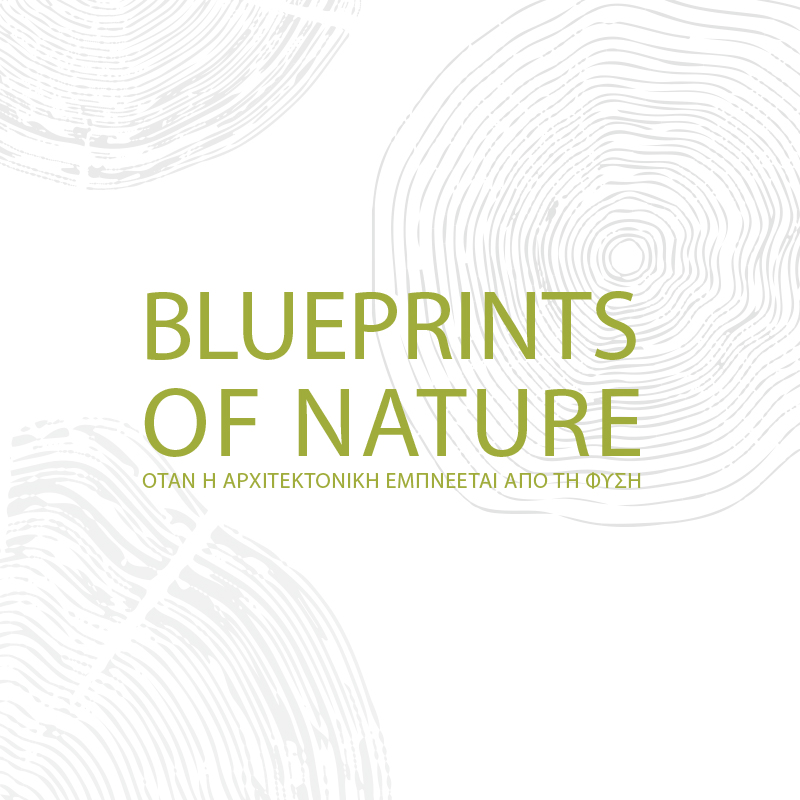

Architectural design has always seen nature as a source of inspiration and knowledge for drawing ideas. Many forms, shapes and mechanisms that can be found in various plants, animals and living species have been the inspiration in designing projects with impressive features at a morphological and functional level. This thesis aims at studying the relation between nature and architecture, as well as finding the ways and strategies in which nature’s elements are transferred to an architectural design. Thus, it is attempted to explore and also separate the architectural approaches that make this transfer, with particular emphasis on the clarification of their definitions, their basic conceptual principles and the differences between them. More specifically, the research aims at analyzing and observing organic architecture which pursues the harmonization of the construction with landscape, biomorphic architecture which is based on the morphological imitation of the natural world and the biomimetic architecture, that simulates the principles governing the functions and the mechanisms of nature to the architectural design. At the same time, elements relating to the origin and evolution of the above mentioned architectural approaches will be examined, as well as the way in which these approaches incorporate nature into the design. Throughout the research, the questions that are generated while the concepts are thoroughly analyzed, are answered through presenting the research’s results.
Supervisor: Symeonidou Ioanna
Reference Number: 870
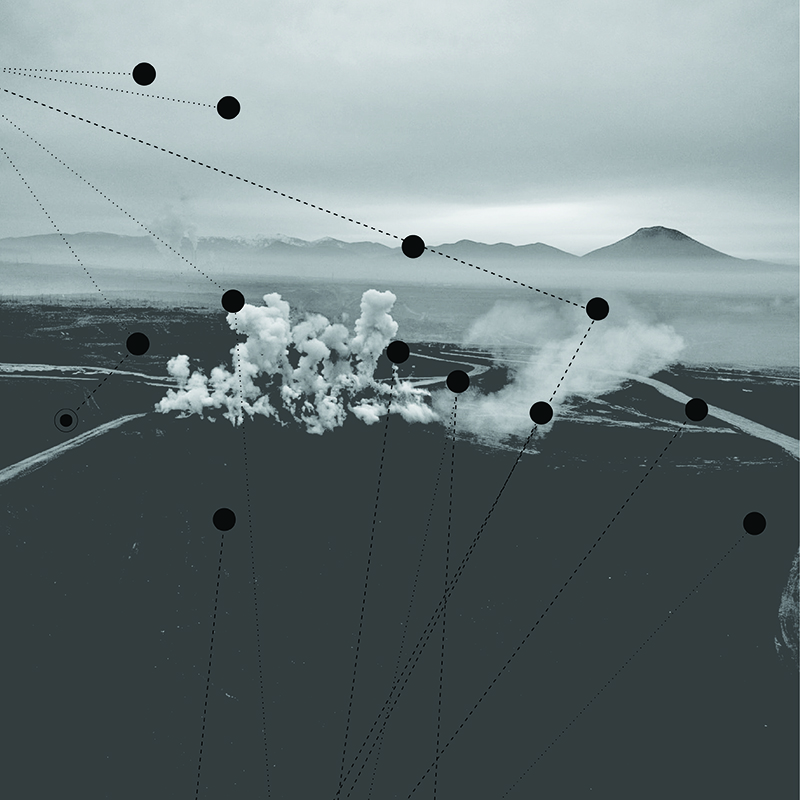

From the early 70s, when coal extracting techniques are first being introduced to the Greek power production scene, up until the recent debate regarding gold mining procedures and hydrocarbon excavations in Chalcidiceand Epirus respectively, the issue of forced-population resettlements is becoming more and more crucial. Specifically, lignite mining in the regional unit of Kozani, is the main cause for the resettlement of many communities, in and out of the defined prefecture. Given the fact that every case is unique, it's important to study and analyze the origins of the phenomenon, the way the procedure is being held from start to finish, the legislation that defines it, as well as the different players that take part and are being directly or indirectly affected. At the same time, the gradual detachment of electric power production from state affairs, allows for the accession of private investors into the coal-exploitation process, playing in this way a key role at the creation of the new settlements but also the sustainability of the old ones.
Supervisor: Lykourioti Iris
Reference Number: 872
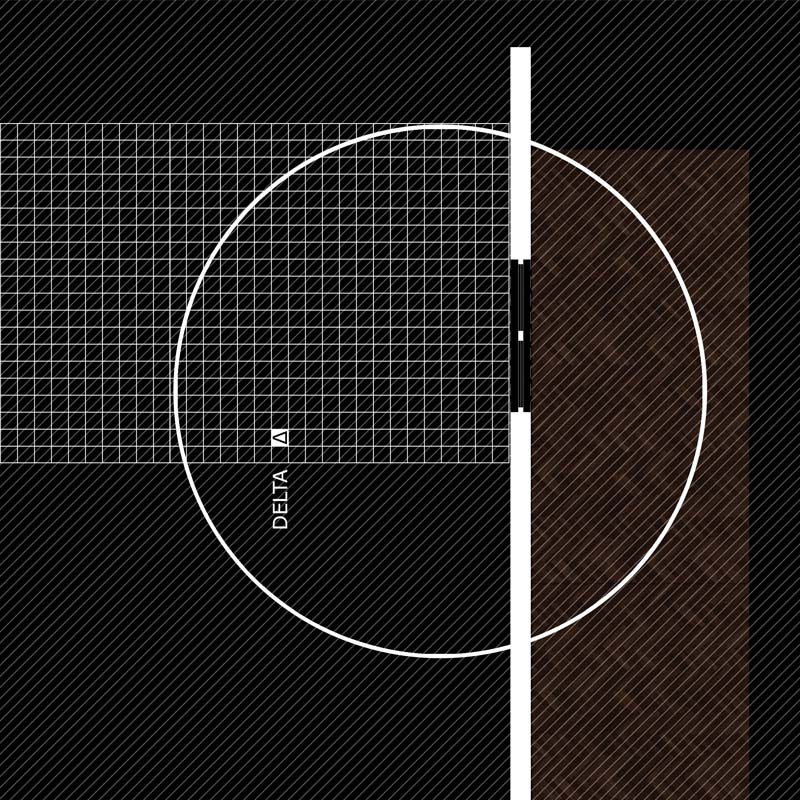

The zone of the boundary between the interior and the exterior space could possibly be outlined as a wider set of things, with the window port as the sole point of intersection. This zone is a point of interaction of different spatial conditions, functions and uses, in which they coexist and evolve parallelly, although they differ conceptually and topographically. The exterior forms the divided form of the interior as an extension. The threshold in this case is represented by the transparency. Transparency due to its particular material properties operates either as an optically translucent surface or as a mirror. It depends on the position of the observer. But who is the observer and who is being observed? It might be argued that the observer status is attributed to the person standing in the interior. But what exactly is interior? The position is relative. You are standing inside your home, so the exterior includes everything but that. Although, when you are standing in your balcony you are basically located outside your home. Until you pass by the doorstep, the balcony is being considered as exterior. Then, the exterior consists of everything except your balcony. Transparency is derisive. It reverses the characterisations that we hurriedly assigned. The same applies to the balcony. Transparency is a boundary between the safe and the unexpected space. The balcony on the other hand is the boundary between the ultimate point of property and the rest of the world that unfolds around it. In the context of this research, we analyse theories related to the concept of boundary, we exhibit data related to the "transparent" architecture and we analyse the typology of the Greek “apartment building of the consideration”. Finally, as a point of reference all the above, we define this specific area, at the student’s appartments, in the city of Volos, as the main subject of the research.
Supervisor: Giannisi Phoebe
Reference Number: 886


The last few years, the advances in computer-aided design (CAD) and computer-aided manufacturing (CAM) technologies have an impact on building design and construction practices (Kolarevic, 2001). CAD/CAM technology had changed the traditional design process and grew into a new design and construction process. CAD tools are increasing their expressive and geometric power to create a design process in which the computer model can be used throughout the whole design process (Achten and Joosen, 2003). This thesis explores the digital workflow from the perspective of the term “File to Factory” and examines the changes that have emerged through the study of new digital processes for design, production and manufacturing. Research methodology is developed on two levels. At the first level, the influence of digital media on the design and manufacturing process is analyzed, as well as their impact on the factors contributing to the processes, as they have been developing in recent years in the relevant literature. Based on the bibliography study, it is particularly important to understand the process of architectural design and to study the features and functions of digital media (CAD / CAE / CAM) through it. The second level provides examples of architectural studies and attempts to approach the practical aspect of digital media. Finally, through the parallel study of both the bibliography and the examples, this research is closed by extracting and presenting the conclusions of the research questions.
Supervisor: Symeonidou Ioanna
Reference Number: 873
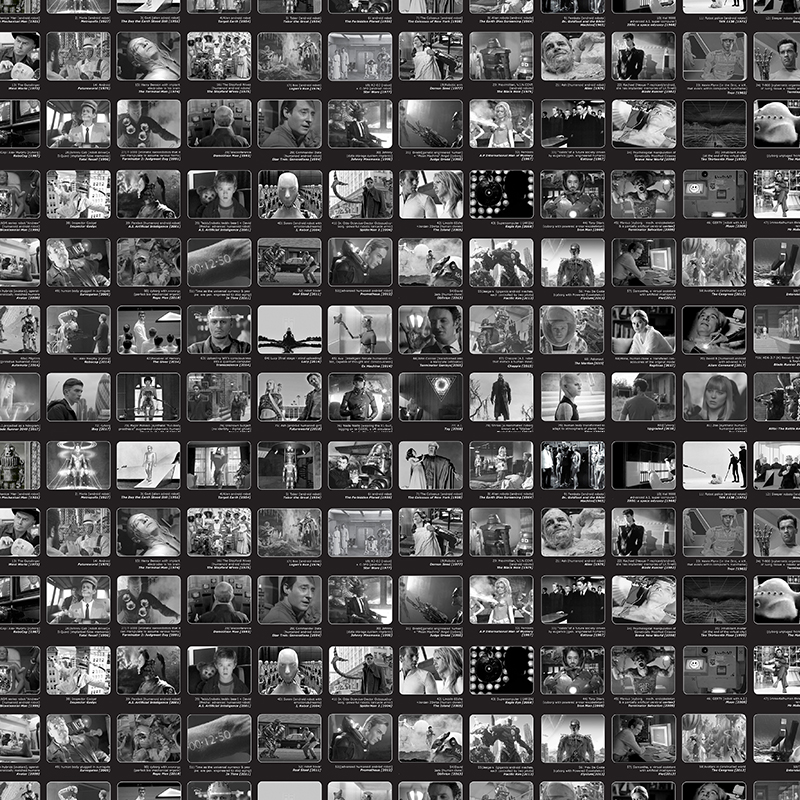

AccordingtoBenjamin, film has a «unique ability to use natural means to incomparably convincing expression to the fairylike, the marvelous, the supernatural». Cinema through a machine can portray the world, but a world that, at the same time, imposes through the machine on mass dissemination. Each scenario, whether it belongs to the real or the imaginary, involves fragments or whole pieces of the way in which societies exist in the timeframes of yesterday, now and tomorrow, in a mix of senses of how people perceive the world around them. During the survey, over 200 films, series, anime and animation from the field of science fiction were examined. After several analyses and rankings carried out in different stages, 82 films were selected, chronologically presented, creating a database. The search for the forms begins with the early representations of the mechanical bodies, extending up to their modern versions, which accurately replicate the human form. However, the possible forms of the metahuman body that have been chosen refer to those forms where their physical status was altered by artificial rather than natural means, creating a new condition, a hybrid new body, a condensed image of fantasy and material reality, something between living and artificial form of being. Developments in the fields of information technology, biotechnology, bio-medical engineering, robotics, nanotechnology and artificial intelligence promise an over-planned future that is confusing at first sight. The city and the body are connected, committing the subject to upgrade himself to be able to join the enlarged city of today. Man «acquires technology consciousness as an extension of himself», and seems to require new preconditions for understanding this self and its position in a complex world that is constantly growing. Through all these spatial and conceptual changes, as well as the «transcendent»abilities that man acquires by continually extending himself, the question arises whether will he continue to be human in the sense of human as we have known it to this day?
Supervisor: Papadopoulos Spiros
Reference Number: 869
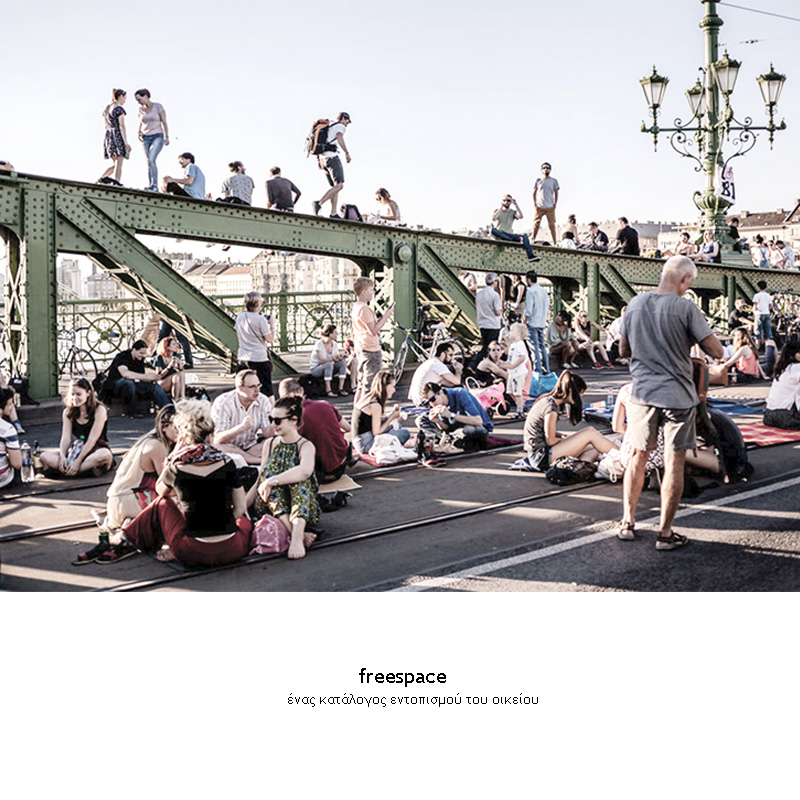

In this current research study, the meaning of freespace is developed. Freespace, through its emptiness, could be seen as a space of intimacy, a democratic space, a space of opportunity. Initially through selected examples from the Venice Biennale of Architecture 2018, based on events and situations that are taking place in the city, as well as ways of producing space, the nature of the term freespace is highlighted. What is freespace? How is it related with the public life of the city? How does the design of space affect the human scale? How do people arrogate the areas of the city? Then, there is a list of examples that are included in the city of Volos in an effort τοsearch for and approach the concept of freespace.
Supervisor: Gavrilou Evelyn
Reference Number: 923


Video games are taking an important place in the everyday life of people, so many museums have chosen to dedicate parts of their space to analyze and display them. The way videogames are treated by the most people have changed since they have been part of the museums and now they are considered as a means of expressing ideas. This study, attempts to explore the entry of video games into museums through the analysis of major moving and permanent exhibitions. First, the meaning of the museum is studied as it is an important part of the research, as well as their design both spatially and meaningfully because each museum follows a different conceptual approach to presenting its exhibits. Then, the visual value of video games and their connection to museums is analyzed.
In this study, five exhibitions dedicated to videogames were selected to be presented as they were created by major museums such as the MoMA. Every exhibition approaches and presents the world of video games in a completely different way. For example, there are exhibitions focusing on creators and others on the visual value of video games. Finally, the most frequently presented games in the exhibitions are presented and an attempt is made to link these games to concepts that are encountered in art and architecture, with the aim of emphasizing the importance of video games being part of exhibitions.
Supervisor: Papadopoulos Spiros
Reference Number: 907
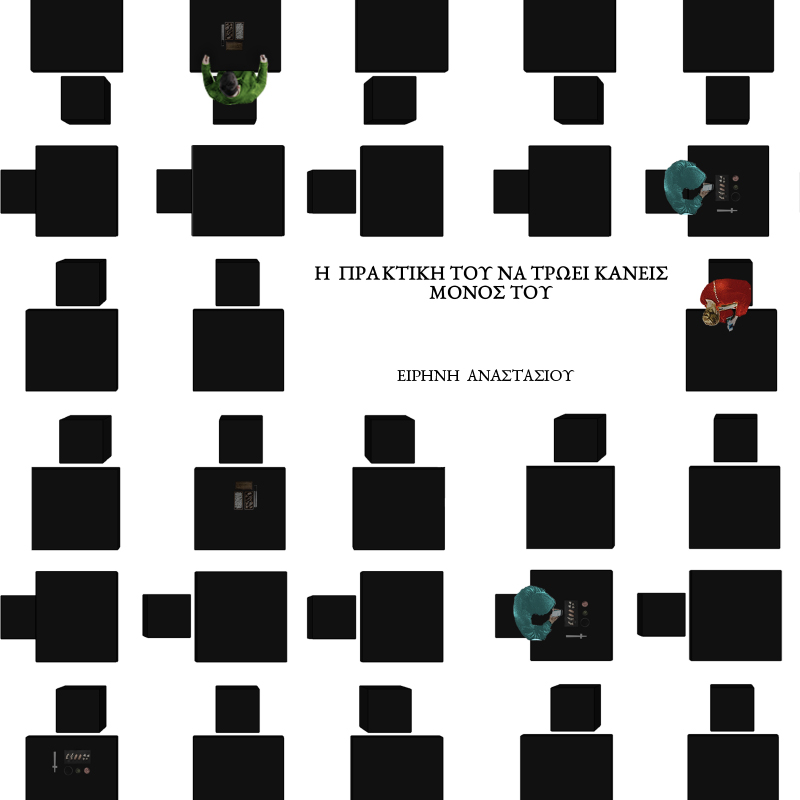

A research about the base of the Japanese kitchen, through an anatomy in the depths of the national civilization and culture. At first an approach of the Japanese identity and later the interpretation of Japanese facts going back to the foundation of the country until today. The decoding is realized by analyzing the architectural structure of the kitchen in dimensions of space, home appliances and human behavior. I look further into the cooking and aesthetic presentation of the food where a history regarding the making of dinner and its social impact is, concealed. The research is completed from the data I personally collected during my visit in the Tokyo region and the experiences I gained from the everyday life. Contradictory pairs that I came across with throughout my research and observation, but also terms such as “piece”, they cover an important field of my study. The perception deriving from the space impressions, the flavors, the participation in the local events and of course the interaction with the locals, created the main question that this research examines. Is the procedure of dinning a practice of eating alone or a cooperative act? For this speculation I retrace social parameters that might have affected in this phenomenon, parameters that have origins way back but also the contemporary world. I detect the forms that express the human loneliness and introversion and how they appear in the idea of “practice eating alone”. From the information I gathered in combination with my exploration I produce a personal album, a travel journal, a self-experienced documentary.
Supervisor: Gavrilou Evelyn
Reference Number: 840

